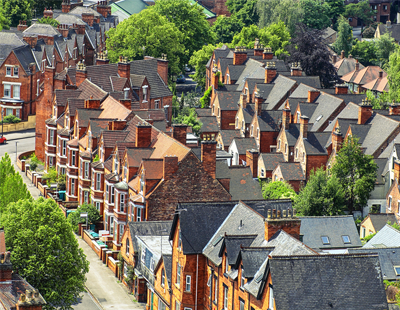
Price growth in the housing market is slow across the UK but London is again the most troubled region, seeing an annual fall of 0.3 per cent in September according to the government’s official ONS House Price Index.
Average house prices in the UK increased by 3.5 per cent in the year to September, up slightly from 3.1 per cent in August. The average UK house price was £233,000 in September 2018. This is £8,000 higher than in September 2017.
On a non-seasonally adjusted basis, average house prices in the UK were unchanged between August and September this year, compared with a decrease of 0.4 per cent in average prices during the same period a year earlier.
House prices in England increased 3.0 per cent in the year to September, up slightly from 2.8 per cent in the year to August. The average price in England is £249,000.
And prices in Wales increased by 5.8 per cent over the last 12 months to an average of £162,000. In Scotland, that average increased 5.8 per cent annually to £153,000.
The average house price in Northern Ireland currently stands at £135,000, an increase of 4.8 per cent.
The West Midlands showed the highest annual growth in a single region, with prices rising by 6.1 per cent followed by the East Midlands on 6.0 per cent.
London is the region with the highest average house price at £482,000, followed by the South East and the East of England, at £328,000 and £294,000 respectively.
Jeremy Leaf, north London estate agent and a former RICS residential chairman, says: “Once again we are seeing prices softening but no dramatic change, underpinned by low mortgage rates and supply.
“The biggest problem we are finding, on the ground, is lack of transactions and the time required to bring them to fruition.
“The price falls in London are masking a more resilient picture elsewhere in the country, underlining how misleading it can be to judge the market as a whole by what is happening in one region.
“Brexit is not the main culprit, although news today that negotiations may finally be coming to a conclusion will be welcome. Historic affordability issues, particularly in London, are more of a problem.”












.png)


.png)




Join the conversation
Jump to latest comment and add your reply
Very balanced article Graham. I think most of the industry agree prices are slowing and the days of over valuing and waiting for the market to catch up are gone. Having seen figures reported elsewhere on sales volumes I looked at the land registry figures.
https://www.gov.uk/government/publications/uk-house-price-index-summary-september-2018/uk-house-price-index-summary-september-2018#sales-volumes
Underneath the table of results about sales volumes there was very important qualification. The very last paragraph was the most important.
Note: The annual % change in the ‘Difference’ column will be influenced primarily by level of completeness of the latest month’s data reported and does not necessarily reflect the genuine trends.
The estimate for July 2018 is calculated based on around 85% of the final registered transactions. The number of property transactions for July 2018 will increase as more transactions are incorporated into the index.
Comparing the provisional volume estimate for July 2017 to the provisional estimate for July 2018, volume transactions fell by 1.3% in England and increased by 0.5% in Scotland, 2.9% in Wales and 4.9% in Northern Ireland.
Anyone buying in London right now had better be in it for the very long term, unless they are getting at least a 30% discount. There doesn't seem any scenario in which things don't get quite a lot worse before they get better. Prices are massively out of whack with earnings (which has always signalled correction in the past), interest rates are rising, a lot of new supply in coming on stream, taxes on property are going up, Corbyn is poised for Downing Street, which his land tax and oh yes ... isn't there something going on with the EU also?
Please login to comment